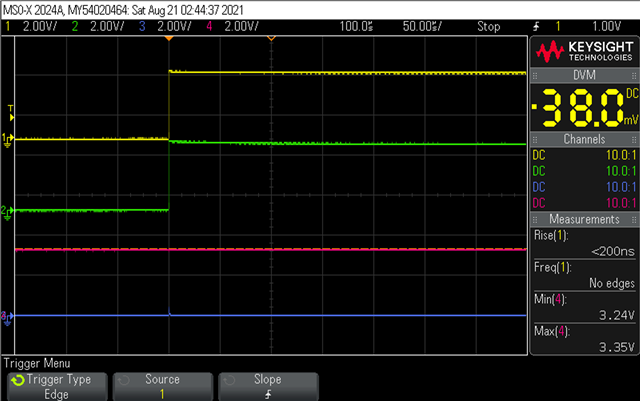Other Parts Discussed in Thread: TPS22917
When the TS3A44159 is in a demux'ing configuration (see U1) is it possible for current to get injections from any of the "IN" inputs or a disconnected "NO"? In my design I am noticing that when signal is injected into the "NC" side from "Green" signal the "Blue" signal starts to rise after about 100uS which then causes the mux to connect NO to COM which finally connects the "Blue" signal over to the "Yellow" signal and then for some reason the "Blue" and "Yellow" signal are held at about 1V (even though there's a 10k pulldown on Blue signal). In my test scenario there are no other ICs/signals connected the the "Yellow" and "Blue" signals (besides what is shown in the below schematic). Overall very weird behavior but completely repeatable on my pcbs. Is this expected behavior? What is the cause? How can I prevent this from happening? Thanks.
Please see below simplified schematic:
And oscilloscope capture of the "Yellow", "Blue", and "Green" signals:
Let me know if any more info could be useful.





